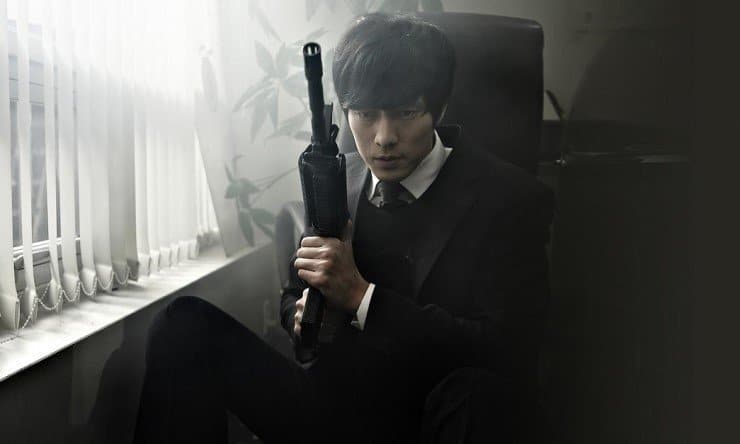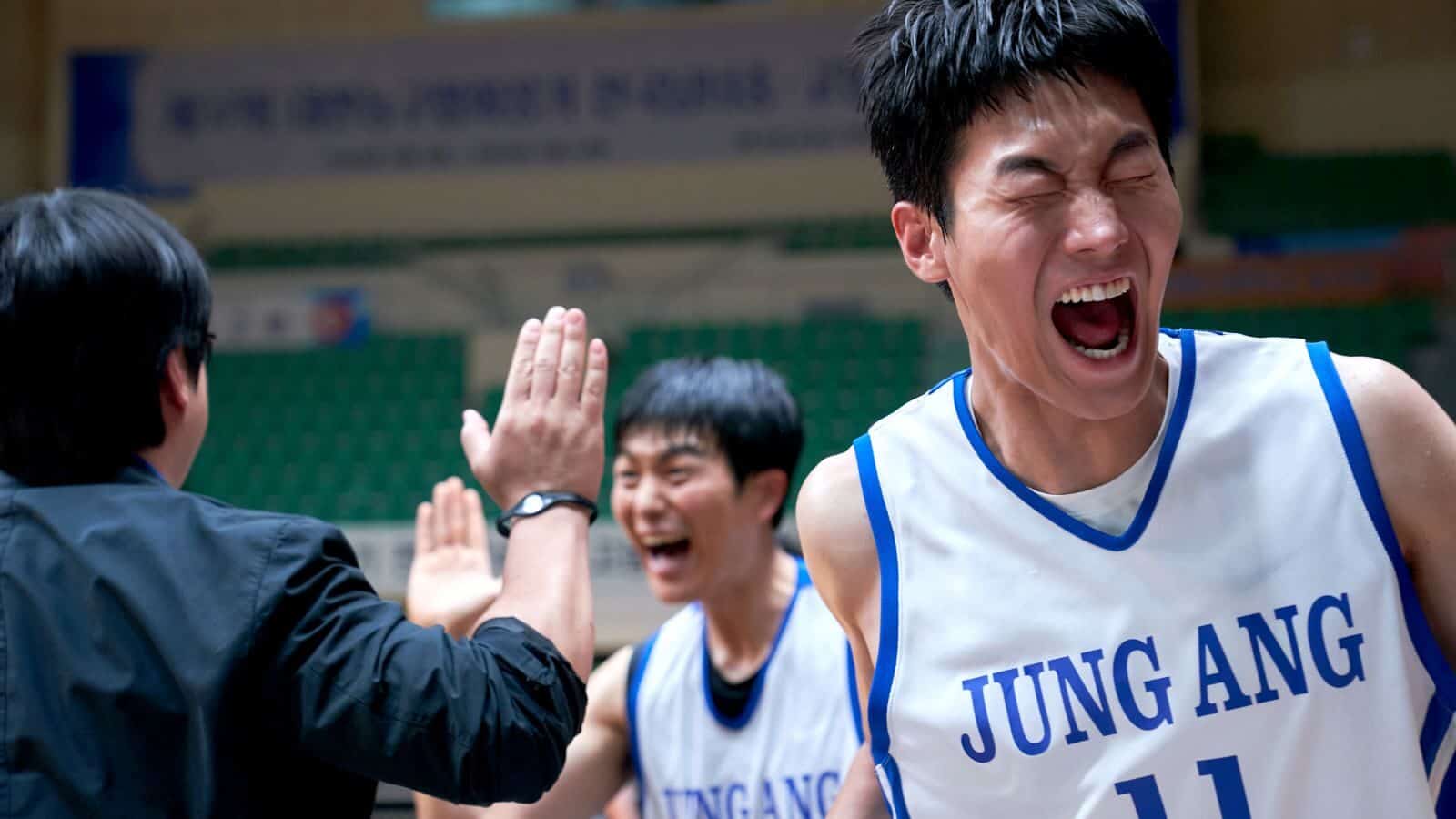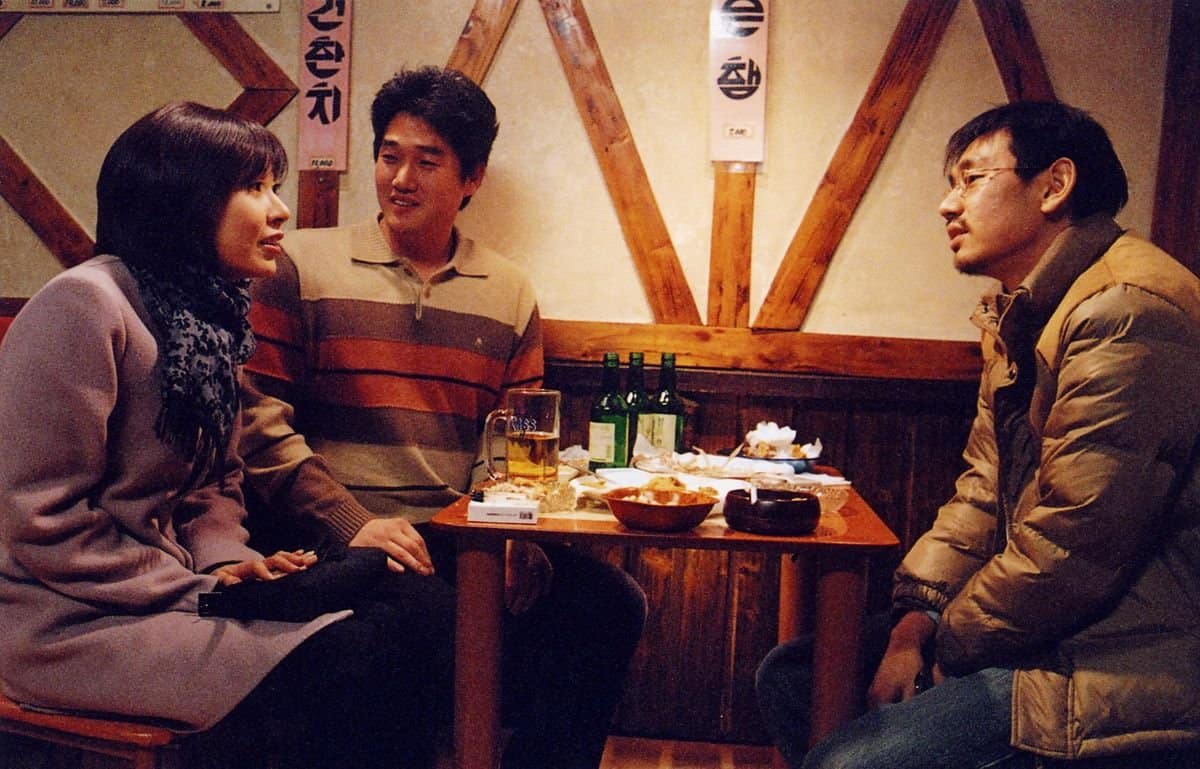“You're a real scumbag, I like you” says Lead villain Sasaki to the nominal hero Mr. Taekwondo. Cinema has always been transnational by design, its visual language allowing features to be reworked and reimagined into different cultures. “Yojimbo” stemmed from Kurosawa's love of the American westerns of John Ford. Sergio Leone then reworked it into “A Fistful of Dollars” and here Lee Doo-yong was to rework the theme again in the quasi-western “Manchurian Tiger”. With the Kung Fu bloom in full flow, the blending together of genres would be ideal box office as the action movie began to take shape. Now, almost 40 years later, does it still hold up?
Mr. Taekwondo (Han Yong Cheol) drifts into town. His prowess sees him hired by Wang (Kim Mun-ju) to rob Sasaki (Bae Su-chun) of 100 bars of gold that he claims are rightfully his. Taking the money despite disbelieving this tale, Mr. Taekwondo is then offered more money by Sasaki to guard the gold. An encounter with Gi Hwa (Woo Yeon-jeong) reveals that these two rivals were once in cahoots and conspired to steal the gold from her father, an act that led to his death and the capture of her brother. Loyalty shifts like sand as the battle for the gold leads to an explosive final confrontation where the true motives of some of the players are revealed.
The action sequences are a curious mix. The Taekwondo movements are crisp and fluid, with Han Yong Cheol showing some precise boot work. The framing of the sequences emphasizes this with a lot of the action shown in wide frames to capture the movements. Despite this though, the action can paradoxically seem rather static. The hand fighting is still the essential “swinging fists” style that was only just starting to become more stylized. That and the norm of the time of bad guys attacking one at a time dates the action considerably. For the most part, the edition is smooth but like many fight sequences shot in the early 70's it can jar when trying to exaggerate some of the movements. It's still very enjoyable and looks better than most of the genre at the time.
Han Yong Cheol has a very minimalist approach to his performance as Mr. Taekwondo. There is little emotion on display. The only real exception is when he chastises Gi Hwa when she tries to offer him her body in lieu of payment. When you recognize that the feature is a Korean reworking of “A Fistful of Dollars” then it makes sense seeing that he is the film's equivalent of the Clint Eastwood “Man with no Name” persona. A fact made explicit right at the conclusion. The two central villains play their parts well. Bae Su-chun as Sasaki has the perfect villainous features for the role and is equally well supported by Kim Mun-Ju's Wang. Their greed is also magnified by their nationality, being both Japanese and Chinese respectively. The gold has a more patriotic purpose than the cynical motivations of the film this one riffs on. A special mention has to go Chang Il-sik who marches through the feature in a knife laden, cape wearing ensemble with absolute style. His departure is a shame as he is clearly having fun in the part!
The Han Yong Cheol/Lee Doo-yong partnership was to create several more features in 1974, including “The Korean Connection” and are certainly ahead of their time. The Taekwondo move set would get greater recognition once Hong Kong cinema began to introduce the wave of Korean super kickers into their movies as the decade progressed. “Manchurian Tiger” though clearly was to have an influence on other film makers. Watch “The Good, The Bad, and the Weird” from 2008 and you'll see another Manchurian set reworking of a Sergio Leone western. Look even closer and you will see a very similar attire on one of the central characters to how Han Yong Cheol looks here.
As mentioned earlier, there is a less cynical approach on display here. Whilst the surface layer looks like we are going the same way with the Italian western, the motivations lead to a very different conclusion with self-interest making way for patriotic ideal. Therefore it makes perfect logical sense for the two antagonists to be Japanese and Chinese respectively. We also get a redemptive arc for Gi Hwa's brother. A drunken libertine when first introduced in the flashback sequence, he is a righteous avenger upon his return. Mr. Taekwondo's ultimate motivation is also one at odds with the initial surface view.
Lee Doo-yong had a varied career in a number of genres but comes across as comfortable as an action director. This feature feels more polished than “The Korean Connection”. The western riffs give a sense of being almost out of time with the setting at odds with the presentation at times. Nonetheless, it is certainly a notch above most genre work of the same vintage.
“Manchurian Tiger” has dated, of that there is no doubt. Yet it is still an engaging piece if you can get past the limitations of the time in its action choreography. The reworking of the spaghetti western riff into Korean cinema (despite the said Spaghetti western being based on a Japanese Samurai film!) gives it a bit more substance even if it pulls back from the cynicism by its conclusion. Thoroughly enjoyable and a great introduction to Korean action cinema of the 1970's.

















